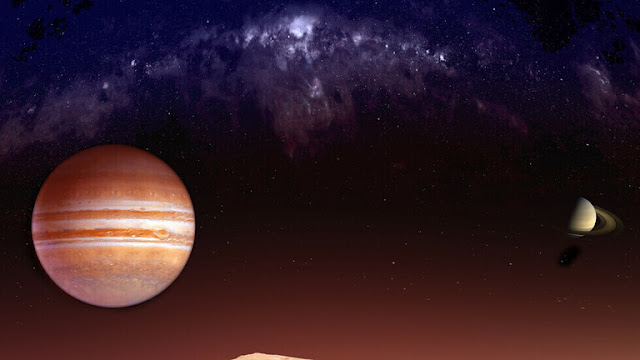 |
During its 33rd low pass over the clouds of Jupiter, the Juno spacecraft has picked up an interesting development of the giant planet's atmosphere, which known as the "Clyde Spot".
The reason for its name
The feature unofficially named after the amateur astronomer "Clyde Foster" of Centurion, South Africa . who discovered it in 2020, using his own 14-inch telescope near the famous ,Great Red Spot.
 |
The first trip
And on June 2 of that year, just two days after Foster's initial discovery, NASA's Juno spacecraft provided detailed observations of the new sight.
which scientists suggested was a plume of cloud material, that erupted over the upper layers of Jupiter's atmosphere southeast, the giant planet.
The Juno spacecraft returned to take a good look at the elliptical feature on Jupiter.
which nicknamed the "Clyde Spot", on April 15, 2021, and it had a brutal new look.
In a statement released on Tuesday, May 18, NASA described the spot as:
"a cloud of cloud material erupting over the upper layers of the Jovian atmosphere."
Jupiter produce unconventional formations in the atmosphere.
many of which dissipate fairly quickly, but the new sight has some ability to survive.
Clyde spot developments
NASA said the new sight "has evolved into a complex structure.
That scientists call a region of folded filaments, also this area is two times larger in latitude.
And three times in longitude than the original spot.
And it has the potential to persist for a long period of time."
Juno's new observation shows that the smaller spot has migrated away from the Great Red Spot.
And the differences in photos taken for nearly a year are staggering, then in 2020, the slick appears compressed.
And in 2021. it looks like an abstract set of swirls, like paint rolling in water.
Providing and processing several exquisitely space images.
Kevin Gill worked with Juno data to refine the images, and highlight location changes over time.
The Juno mission, which launched in 2011,has been extended to 2025.
The "Clyde Spot" is testament to Juno's continued exploration of Jupiter ,and is also a vivid example of how dynamic the planet is.
Source: CNET
read also :

Comments
Post a Comment